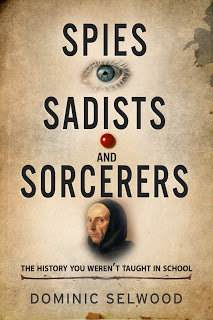My dear husband bought me this book which had been removed from the Library of the Catholic University of America in Washington, DC and it just arrived this past Wednesday. I'm enjoying the essays, listed in the table of contents below:
Introduction by J.K. Ryan
"Most consoling intelligence from England ..." by E. D. Benard.
Cardinal Newman and America, by Edward Hawks.
Newman letters in the Baltimore Cathedral archives, by J. T. Ellis.
The psychology of a conversion, by D. J. Saunders.
The tone of the centre, by J. J. Reilly.
Maker and thinker, by J. K. Ryan.
"The salvation of the hearer ..." by E. M. Burke.
For the modern reader, by D. M. O'Connell.
Newman and modern educational thought, by J. F. Leddy.
Newman and the liberal arts, by J. E. Wise.
University, actuality or idea? By C. F. Donovan.
Newman and papal infallibility, by J. C. Fenton.
The beauty ever ancient, ever new, by W. P. Burke.
Newman centennial literature: a bibliography (p. [209]-227)
Biographical notes on contributors.
I'm also enjoying the historical time-travel it takes to read this book. It was published by the Catholic University of America Press in 1947, collecting essays published in America, The American Ecclesiastical Review, Thought, and The Catholic Historical Review during 1945. The centennial being celebrated was the 100th anniversary of Newman's conversion on October 9, 1845.
In the introduction by Father John K. Ryan, the context of the times impressed me. England and Europe of course were at war in 1945; therefore, Newman's centennial could not and did not receive the attention it deserved there. It's hard to organize a scholarly conference when you're dealing with German air raids, rationing, military deployment, and the like.
Father Ryan makes the alarming statement in his introduction that for all his greatness, Newman certainly can't be considered a candidate for sainthood. Perhaps Father Ryan was influenced by the Henri Bremond's
The Mystery of Newman? He certainly forgot about Newman's reputation for holiness at the time of his death: Catholic, Anglican, and Protestants in England hailed him as a saint. Bishop Philip Boyce of Raphoe
wrote about the changing view of Newman's holiness in an essay titled "Tokens of Holiness
in Blessed John Henry Newman":
It is surprising then, that the idea of holiness in Newman’s life began to fade in public perception for over fifty years after his death. This was partly explained by some publications that propagated less than favourable interpretations of his character and his works. His brother Francis who had abandoned the Christian faith published a book about John Henry a year after his death. It was a reaction to the outburst of praise his deceased brother had received and it portrayed him in a very hostile manner, as being duped by organised religion and arrogant in his personal life. In the following year, 1892, another publication by Edwin Abbott, an Anglican, was also critical of Newman. He censured him for sacrificing his reason to the demands of an unfounded and irrational faith.
Henri Bremond, the French philosopher, published in 1906 a study on Newman that gave rise to the widespread notion that he was a lonely and melancholy man, even a recluse. It was translated into English the following year. Bremond’s study influenced even the widely known and informative Life in two volumes by Wilfrid Ward. Here again, at least in certain chapters the idea of a sad, sensitive and solitary Newman is given to the reader.
Although there were others who questioned Newman’s sanctity on various points, things began to change in the late 1950’s and early 1960’s.
So Ryan has been proven wrong about Newman's holiness but I can understand the limitations of what he knew in 1945. On the other hand, Father Ryan writes most appreciatively of Newman's great achievement in The Dream of Gerontius in his chapter "Maker and Thinker":
The Dream of Gerontius is unique among Newman's poems and in a way among all poems. It is uniquely ambitious because of all the poems that have been written about death and life after death, none has been quite so daringly explicit as this one in its use of revelation and of metaphysics and in its psychological analysis. . . . In The Dream of Gerontius Newman has been completely successful in his daring and difficult task. . . .
When we received the book on Wednesday, I read one of the essays out loud to my husband, "Most Consoling Intelligence From England . . ." by Father Edmund Darvil Benard. Father Bernad describes the reaction to the news of Newman's conversion among Catholics in the USA in 1845. He notes that 1) There were only 1,071,000 Catholics in the entire country; 2) News from England and the Continent was delayed at least a month, because letters and newspapers traveled by ship--there was no transatlantic cable until 20 years later. As we read the essay we also reminded ourselves that Father Benard could not just search for these reports in Catholic diocesan newspapers on the internet. Perhaps he could view them on microfilm, but he might have been looking at the actual periodicals.
I look forward to reading the rest of the essays, even though--or perhaps--the scholarship is 71 years old and things in Newman studies have certainly changed since then.
Cor ad Cor Loquitor!!

























